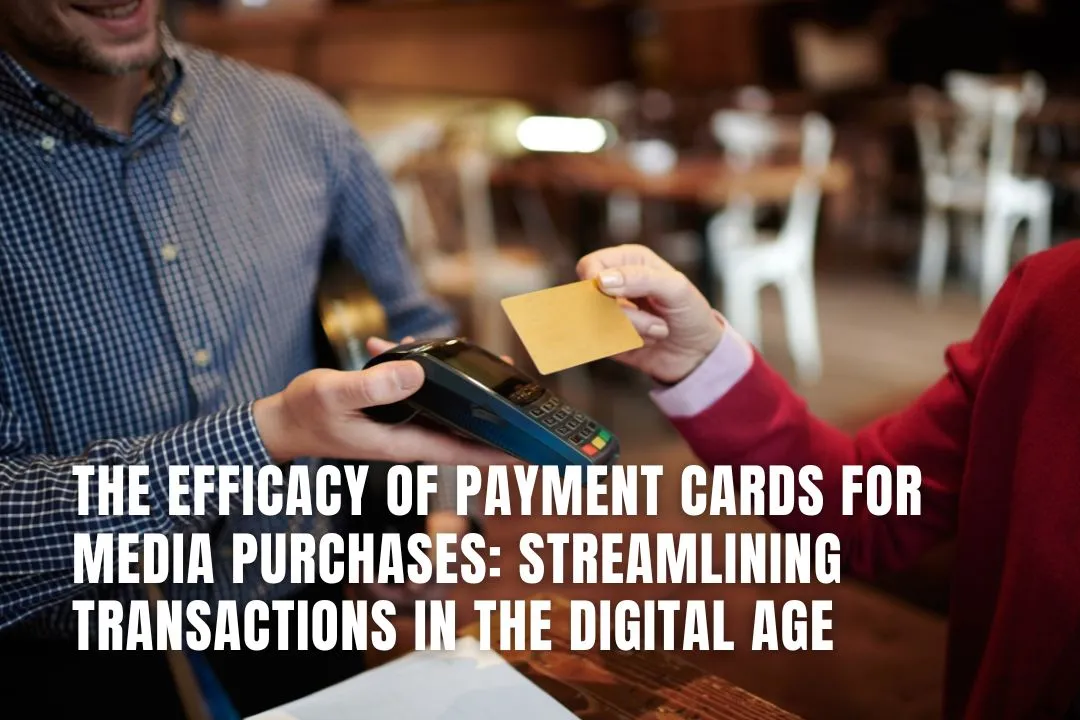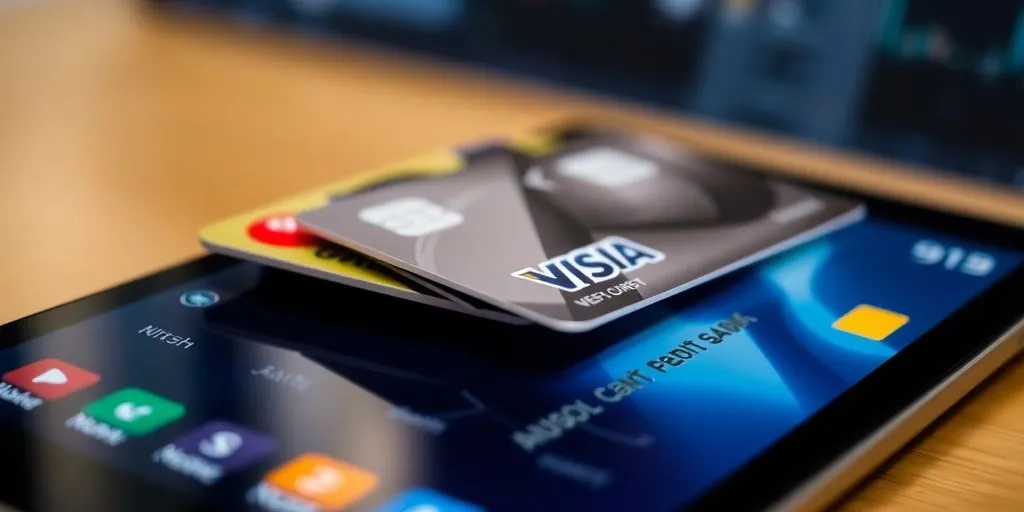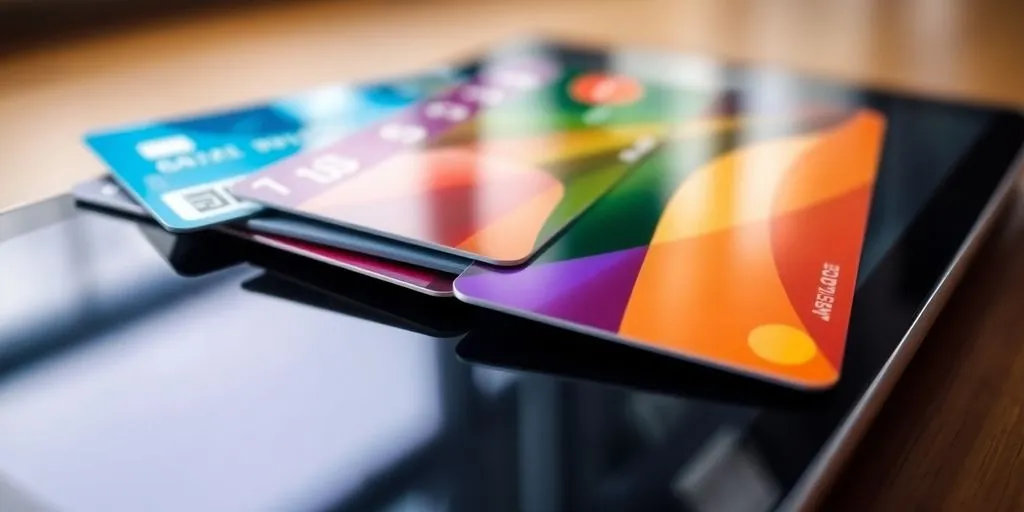December 12, 2024

In today's digital world, payment cards play a crucial role in how we purchase media. This article explores the effectiveness of payment cards for media purchases, highlighting their evolution, advantages, challenges, and future trends. As technology continues to advance, understanding the efficacy of payment cards for media purchases becomes essential for both consumers and businesses.
The journey towards cashless transactions began long ago, with the introduction of payment cards. Initially, these cards were primarily used for in-person purchases, but as technology advanced, they became essential for online transactions. The shift from cash to cards has been driven by the need for convenience and security in financial dealings.
In recent years, electronic payment methods have surged in popularity. This includes not only credit and debit cards but also digital wallets and mobile payments. The following points highlight this trend:
Digital technology has transformed how we make payments. The integration of embedded finance into various platforms has made transactions smoother and more efficient. For instance, businesses are now able to offer flexible payment options that enhance customer experiences. This shift is crucial as it allows for:
The evolution of payment cards reflects a broader trend towards a cashless society, where convenience and security are paramount in consumer choices.
Payment cards offer a quick and easy way to make purchases. With just a swipe or a tap, consumers can complete transactions in seconds. This speed is especially beneficial in today’s fast-paced world where time is precious.
One of the main advantages of using payment cards is the security they provide. Many cards come with advanced features that help protect users from fraud.
Payment cards seamlessly integrate with various digital platforms, making them a preferred choice for online media purchases. This integration allows for a smoother shopping experience.
Payment cards have transformed the way we shop, making transactions not only faster but also safer and more efficient. Their role in the digital age cannot be overstated, as they continue to evolve alongside technology.

Payment cards, while convenient, are not without their security risks. Fraudulent activities can occur, leading to significant financial losses for consumers and businesses alike. Some common issues include:
Another challenge is the potential for technical failures. Payment systems can experience downtime due to:
Despite the advantages, many consumers remain hesitant to fully embrace payment cards due to trust issues. Factors affecting consumer confidence include:
In summary, while payment cards offer numerous benefits, they also present challenges that need to be addressed to enhance user experience and security.
Payment cards, such as credit and debit cards, have been a staple in the world of digital transactions. They offer convenience and are widely accepted across various platforms. In contrast, digital wallets, like PayPal and Apple Pay, provide a more integrated experience, allowing users to store multiple payment methods in one place.
Cryptocurrencies are emerging as a new player in the digital payment landscape. They offer unique advantages, such as decentralisation and lower transaction fees. However, their volatility and regulatory uncertainties pose challenges.
The digital payment landscape is evolving rapidly. Here are some trends to watch:
The shift towards digital payments is not just a trend; it is a fundamental change in how we conduct transactions. As technology advances, the landscape will continue to evolve, offering consumers more choices and greater convenience.
The future of payment cards is bright, with new technologies emerging to enhance user experience. Innovations such as biometric authentication and enhanced security features are making transactions safer and more efficient. Payment cards are also evolving to integrate with mobile wallets, allowing users to make purchases seamlessly.
As we look ahead, consumer behaviour is expected to shift significantly. Here are some key trends:
Regulatory frameworks will play a crucial role in shaping the future of payment cards. Compliance with data protection laws and security standards will be essential for card issuers and merchants. This will ensure that consumer trust is maintained as the market evolves.
The landscape of payment cards is changing rapidly, and businesses must adapt to stay relevant in this digital age.
In summary, the future of payment cards in media purchases will be defined by technological advancements, changing consumer preferences, and the need for robust regulatory compliance. As these elements converge, payment cards will continue to be a vital part of the digital transaction ecosystem.

One of the most notable examples of successful payment card implementation is a leading streaming service. This platform has effectively integrated payment cards into its subscription model, allowing users to enjoy seamless access to content. The convenience of using payment cards has significantly boosted user engagement.
Another successful case is an online news platform that has embraced payment cards for its subscription services. This platform has seen a rise in subscriptions due to its effective use of payment cards.
The integration of payment cards has transformed how media platforms operate, making transactions smoother and more efficient.
From these case studies, several key lessons emerge:
These examples illustrate how payment cards can streamline transactions in the media sector, ultimately benefiting both consumers and service providers.
In conclusion, payment cards have transformed the way we buy media in today's digital world. They offer a quick and easy way to make purchases without needing cash. As technology continues to improve, more people are choosing cards and digital wallets over traditional cash. This shift not only makes shopping simpler but also helps businesses grow by reaching more customers online. While there are some challenges, the benefits of using payment cards for media purchases are clear. They provide safety, convenience, and speed, making them an essential part of our shopping experience. As we move forward, it is likely that these payment methods will become even more popular, shaping the future of how we buy and sell.
Payment cards, like credit and debit cards, are plastic cards that allow you to buy things without using cash. You can use them in shops or online. When you make a purchase, money is taken directly from your bank account or borrowed from a lender.
Using payment cards for buying media is very easy and quick. You can pay online without needing to enter lots of details each time. They also have security features to protect your money.
Yes, payment cards are generally safe. They come with security features like PINs and chips that help keep your information secure. However, it's still important to be careful and monitor your accounts for any suspicious activity.
If your card is lost or stolen, you should contact your bank or card issuer immediately. They can block your card to prevent any unauthorised transactions and help you get a new one.
Payment cards are similar to digital wallets, but with cards, you usually need to enter your card details. Digital wallets store your card information, allowing you to pay with just a tap or click, making them often more convenient.
The future of payment cards looks bright as technology continues to improve. We may see more innovations like contactless payments and better security features, making it even easier and safer to buy media.